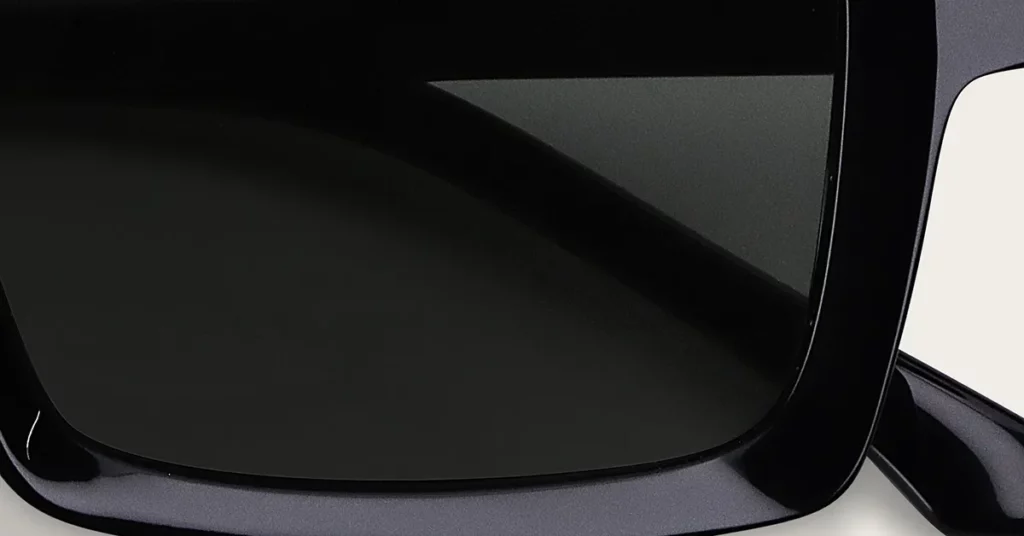If you’re a designer or brand manager, you know that creating sunglasses that are genuinely effective for sensitive eyes is about more than just dark lenses and a stylish frame. The challenge lies in translating a user’s need for comfort into a precise technical specification that a factory can execute perfectly. This guide provides a manufacturer’s perspective, giving you a framework to move beyond marketing claims and engineer truly protective eyewear.
The best sunglasses for sensitive eyes combine three critical elements: polarized lenses to eliminate reflected glare, UV400 protection to block 100% of harmful UV rays, and high-wrap frames to prevent stray light from entering from the sides. This integrated system addresses the primary triggers of light sensitivity, providing comprehensive protection and comfort for the user.
Understanding Light Sensitivity: The Core Problem for Your Eyes
What is Photophobia?
Definition: Photophobia is the medical term for eye discomfort caused by bright light. It is not a disease itself but rather a common symptom of other underlying conditions, affecting your tolerance for both natural sunlight and artificial indoor lighting.
Most Importantly: You need to understand that this isn’t just a minor annoyance for many people; it can be a debilitating symptom. For example, studies show that light sensitivity is present in 80% to 90% of migraine cases and affects over 75% of individuals with dry eye disease. Common triggers include migraines, dry eye, and post-concussion syndrome, making this a widespread issue.
The Anatomy of Discomfort: What Are You Actually Fighting?
To engineer an effective solution, you must first define the problems: direct sunlight, reflected glare, and invisible UV radiation. Direct sunlight is the high-intensity light that causes you to squint, while reflected glare is the intensely bright light that bounces off surfaces like water or pavement. Finally, invisible UV radiation is the damaging component that causes long-term harm.
Simple Analogy: Think of glare as a firehose of concentrated light hitting your eyes, causing immediate discomfort. In contrast, UV radiation is like an invisible sunburn on your eyes; the damage accumulates silently over time without you feeling it, leading to serious conditions like cataracts. Water can reflect up to 100% of UV radiation, making protection critical.
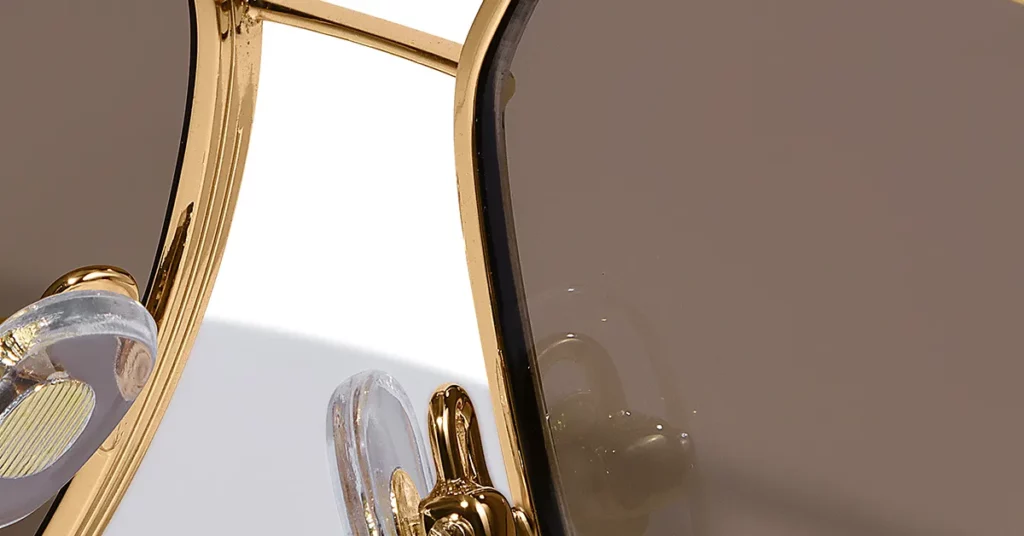
The Core Solutions: A Deep Dive into Protective Lens Technologies
Solution 1: Neutralizing Blinding Glare with Polarization
Definition: A polarized lens contains a special chemical film that acts as a microscopic light filter. This filter is specifically designed to block the intense, horizontally-oriented light waves that create reflected glare from surfaces like water, pavement, and snow.
Simple Analogy: Think of a polarized filter as a set of microscopic vertical blinds. Normal, scattered light comes from all directions and can pass through. But the harsh, concentrated glare reflecting off a wet road is almost entirely horizontal light. The vertical “blinds” of the filter block this horizontal light, stopping the glare while letting useful ambient light through.
The primary benefit of polarization is the elimination of disabling glare, which dramatically improves visual comfort and safety, especially for those with sensitive eyes. This is achieved by laminating a chemical film onto the lens during manufacturing.
Pro Tip: You can easily test for polarization. Hold the sunglasses and look at an LCD screen (like your phone). As you rotate the lenses, the screen should appear to darken or go completely black if they are truly polarized. Keep in mind, this same effect can make it difficult for pilots or boaters to read their digital displays.
Solution 2: Achieving Non-Negotiable UV400 Protection
Definition: A UV400 rating signifies that a lens blocks 99% to 100% of all ultraviolet light up to 400 nanometers. This includes all harmful UVA and UVB rays, which are known to cause long-term eye diseases like cataracts, macular degeneration, and even cancer of the eyelids.
Common Mistake: A dark lens color has zero correlation with its level of UV protection. You must always read the label for a specific “UV400” or “100% UVA/UVB” rating. A completely clear lens can offer full UV400 protection, while a very dark, untreated lens may offer none.
Most Importantly: In modern manufacturing, UV protection is typically an additive mixed directly into the lens material itself, not just a surface coating. Research shows lenses with integrated UV absorbers can block 93% of UV radiation, compared to just 64% without. This in-material protection cannot be scratched off, ensuring permanent safety for the life of the product.
Solution 3: Managing Brightness with Lens Tints and Colors
The core function of a lens tint is to reduce the overall brightness of your environment, which improves visual comfort. However, different colors also filter light in different ways, making the choice of tint a strategic decision that goes beyond pure aesthetics. Selecting the right tint is about actively managing light for specific conditions.
| Tint Color | Primary Benefit | Best For |
| Gray | Provides the most accurate color perception. | General, all-purpose use in bright sun. |
| Brown/Amber | Enhances contrast and depth perception. | Driving and activities where judging distance is key. |
| Green | Filters light evenly to reduce eye strain. | All-purpose use, offering high contrast and color accuracy. |
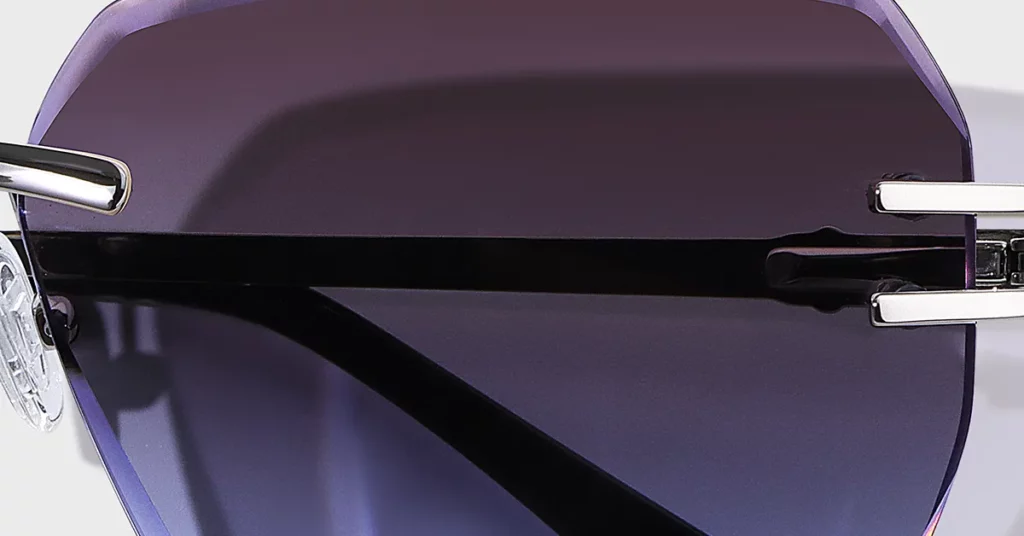
Beyond the Lens: How Frame Architecture Provides the Final Layer of Defense
Solution 4: Blocking Stray Light with High-Wrap Coverage
Definition: Wrap-around frames are designed with a high degree of curvature to follow the shape of your face. This design is crucial for blocking peripheral light that can enter from the sides, top, and bottom of the frame—a major trigger for people with photophobia.
The effectiveness of this wrap is measured by the “lens base curve.” A higher base curve number means the frame has more curvature and provides tighter coverage. While a flatter 4-base frame allows significant light leakage, an 8-base frame provides maximum protection from the sun and elements.
Critical Warning: High-wrap designs can introduce optical distortion, especially away from the lens’s center. This happens because the steep curve of the lens bends light incorrectly if not properly compensated for during manufacturing. For the wearer, this can cause a “fishbowl” effect or even headaches.
Frame Materials: Balancing Durability, Weight, and Style
Your choice of frame material directly impacts the product’s performance, comfort, and premium feel. Each option presents a unique set of trade-offs that you should align with your brand’s goals and your target user’s needs.
| Material | Key Characteristics | Best Use Case |
| Nylon | Lightweight, flexible, highly durable, and impact-resistant. | Sport and performance eyewear where flexibility is key. |
| Acetate | Rich color depth, premium feel, and hypoallergenic. | Fashion-forward lifestyle frames. |
| Stainless Steel | Strong, corrosion-resistant, and provides a sleek look. | Thin, professional-looking metal frames. |
| Titanium | Ultra-lightweight, supreme strength, and 100% hypoallergenic. | High-end, minimalist designs where performance is paramount. |
Frame Fit: The Critical Importance of Closing Gaps
A perfect lens is useless if the frame doesn’t fit correctly. A proper fit is essential for minimizing the light leakage that occurs in the gaps around the frame edges. A poor fit not only compromises protection but also leads to slippage and discomfort, reducing the likelihood that the user will wear them at all.
Best Practice: The ideal frame uses a “three-point fit” system. This ensures the weight of the eyewear is distributed evenly on the bridge of the nose and behind each ear. This creates a stable, comfortable fit that keeps the frame perfectly positioned to do its job without creating pressure points.
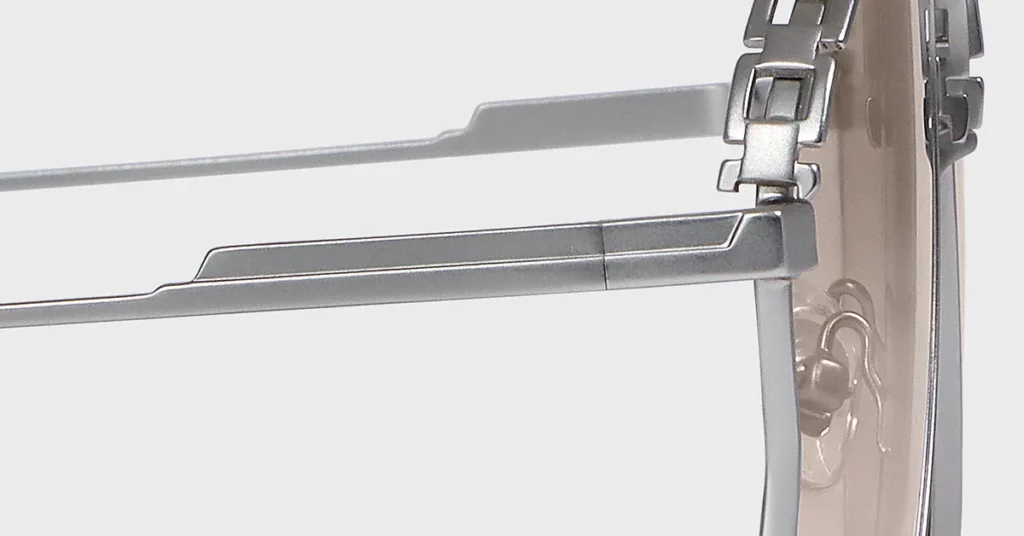
A Manufacturer’s Perspective: Key Engineering & Quality Standards
Decoding Lens Darkness: Visible Light Transmission (VLT) Categories
Definition: Visible Light Transmission (VLT) is the percentage of visible light that is allowed to pass through a lens to your eye. It is the only true, objective measurement of how “dark” a lens is, expressed as a percentage from 0% to 100%.
A lower VLT percentage means a darker lens. Understanding these standardized categories is vital for specifying a lens that is appropriate for its intended use, as choosing the wrong VLT can be ineffective or even dangerous.
- Category 2 (18-43% VLT): Best for moderate or overcast days.
- Category 3 (8-18% VLT): The standard for most sunglasses, ideal for bright, sunny conditions.
- Category 4 (3-8% VLT): For extremely bright conditions like high-altitude snow. Critical Warning: This category is legally not suitable for driving.
The Engineering of Wrap: Understanding Base Curve & Optical Integrity
Definition: The base curve is the measurement of the lens’s front curvature. A higher number, like an 8-base curve, indicates a more pronounced wrap that hugs the face, offering superior protection. A flatter lens, like a 4-base, offers a more classic look but far less peripheral coverage.
Simple Analogy: Think of trying to wrap a flat map around a globe. The map will wrinkle and distort. A high base curve lens presents a similar challenge. Without advanced correction, the optics can be distorted, causing eye strain. True wrap performance is an optical engineering feat, not just a matter of bending a frame.
At Kssmi, we solve this using advanced digital surfacing. This technology precisely recalculates the prescription across the entire curved surface of the lens, neutralizing the distortion that high base curves can create. This ensures your users get maximum protection without sacrificing visual clarity.
A Mark of Durability: The ANSI Z87.1 Impact Resistance Standard
Definition: The ANSI Z87.1 standard is the American National Standards Institute’s benchmark for safety eyewear. It certifies that the glasses have passed rigorous tests for high-impact resistance, providing a level of durability far beyond that of standard fashion sunglasses.
The testing is intense, involving procedures like dropping a one-inch steel ball on the lens from a height of 50 inches. For a product to be Z87.1 compliant, the lens and frame must remain fully intact. Specifying materials like polycarbonate or Trivex, which have natural impact resistance, is the first step toward achieving this standard.
Pro Tip: For a brand building a premium, durable product, specifying Z87.1 compliance is a powerful differentiator. It’s an objective mark of quality that proves your product is engineered to a higher standard of performance and safety.
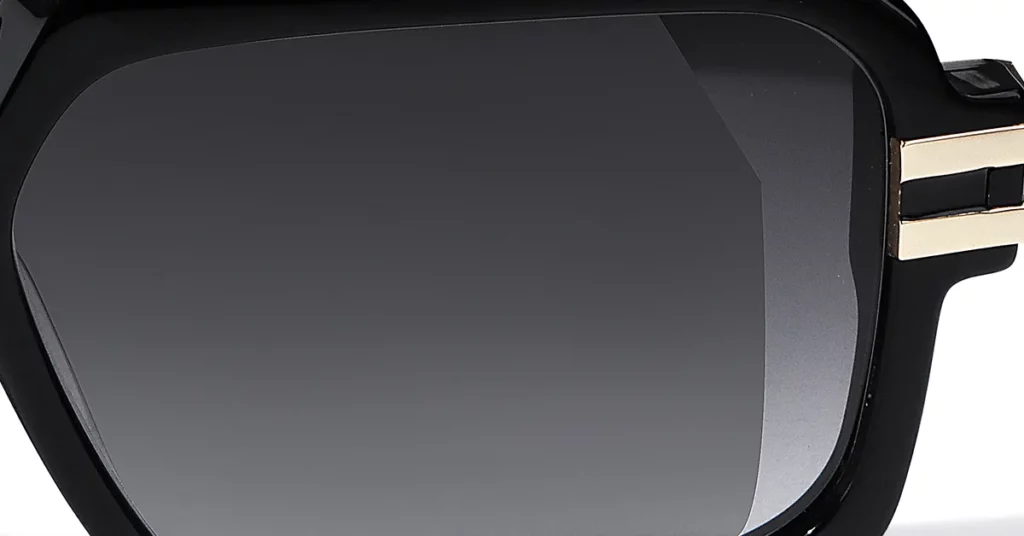
The Kssmi Protective Eyewear Specification Framework: From Feature to Factory
How a Brand Manager or Designer Should Use This Framework
The purpose of this framework is to help you translate a consumer need into an actionable manufacturing specification. It moves you from a vague goal like “reduces glare” to a precise technical requirement like “specify >99% polarization efficiency.” This allows you to make defensible, data-driven decisions that balance performance with production complexity and cost.
Simple Analogy: Using this framework is like handing your architect a detailed blueprint instead of just a picture of a house you like. A blueprint contains the precise measurements, materials, and structural details needed to build a sound structure. This framework does the same for your eyewear, ensuring the final product is engineered with intent.
The Framework Data: Evaluating the 3 Core Protective Features
This matrix evaluates the three core protective features against the critical vectors that matter in product development: their absolute performance potential, their impact on manufacturing difficulty, and the key metric you must use to specify them correctly.
| Protective Feature | Performance Ceiling | Manufacturing Complexity | Key Specification Metric |
| UV Protection | 5/5 (Essential) | 2/5 (Low) | UV400 Rating |
| Polarization | 4/5 (Excellent) | 4/5 (High) | Polarization Efficiency % |
| Wrap Coverage | 5/5 (Essential) | 5/5 (Very High) | Lens Base Curve |
A Deeper Dive into the “Manufacturing Complexity” Score
In my two decades in this industry, I’ve seen that understanding manufacturing complexity is the key to managing costs and timelines. UV protection is a mature, low-cost process, making it an easy win. Polarization, however, requires a delicate lamination process that is difficult and costly, which is why it’s a premium feature.
The highest complexity score (5/5) belongs to high-wrap frames. This is due to the high initial tooling costs and the significant quality control challenges needed to prevent optical distortion. Initial scrap rates for 8-base frames can easily exceed 10-15% in an inexperienced factory. Success here is a true mark of an expert partner.
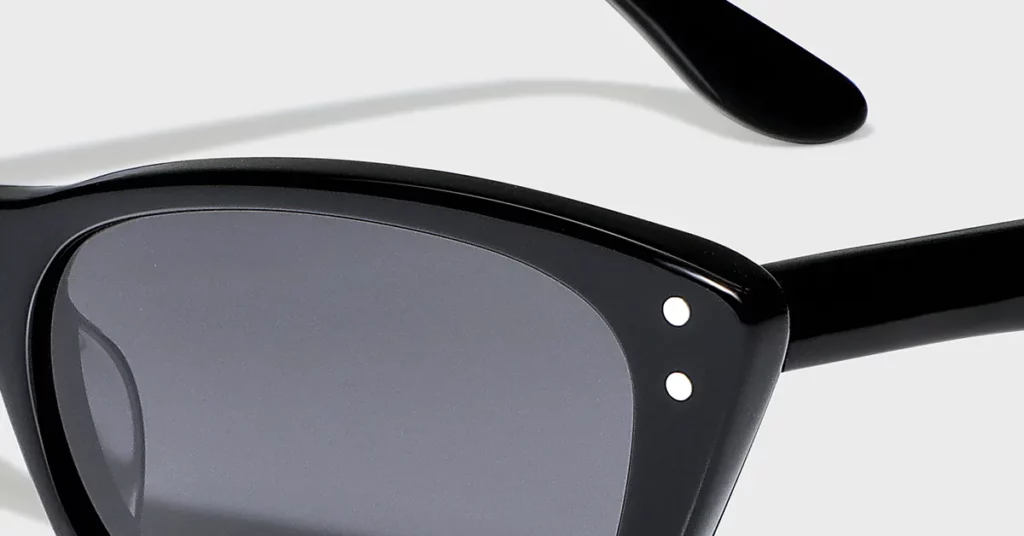
Conclusion
Creating the best sunglasses for sensitive eyes requires a systematic approach that treats the product as an integrated protective system, not just a collection of features. By using the Kssmi Protective Eyewear Specification Framework, you can move beyond simple marketing claims to engineer products based on performance, complexity, and precise metrics. This empowers you to ask smarter questions and partner with manufacturers to build eyewear that offers genuinely superior protection and comfort.
Frequently Asked Questions
1. Are darker sunglasses always better for sensitive eyes?
No. Lens darkness (VLT) only reduces brightness, while UV protection is a separate, invisible treatment. A lens should be dark enough for comfort (typically Category 3), but you must always confirm it has a UV400 rating for full protection.
2. Can I get prescription lenses with all these protective features?
Yes, it is absolutely possible. Modern digital surfacing technology allows for the creation of prescription lenses that incorporate polarization, UV400 protection, and even high-wrap designs while correcting for optical distortion.
3. What is the difference between 100% UV protection and polarized lenses?
UV protection blocks invisible ultraviolet radiation to prevent long-term eye damage. Polarization blocks the visible, horizontal light that creates intense glare. They solve two different problems, and for comprehensive protection, you should have both in one lens.
4. Why do some polarized wrap-around sunglasses give me a headache?
This is almost always caused by optical distortion. If a high base curve (wrap) lens is not made with advanced digital surfacing to compensate for the curvature, it can strain your eyes and lead to headaches. Quality manufacturing is the key to avoiding this.
5. Is it worth paying more for a well-known brand of sunglasses?
A higher price should reflect superior engineering, not just a logo. A premium product should use better materials, offer distortion-free optics in wrap frames, and meet higher standards like ANSI Z87.1. Judge the product on its technical merits, not just its name.

